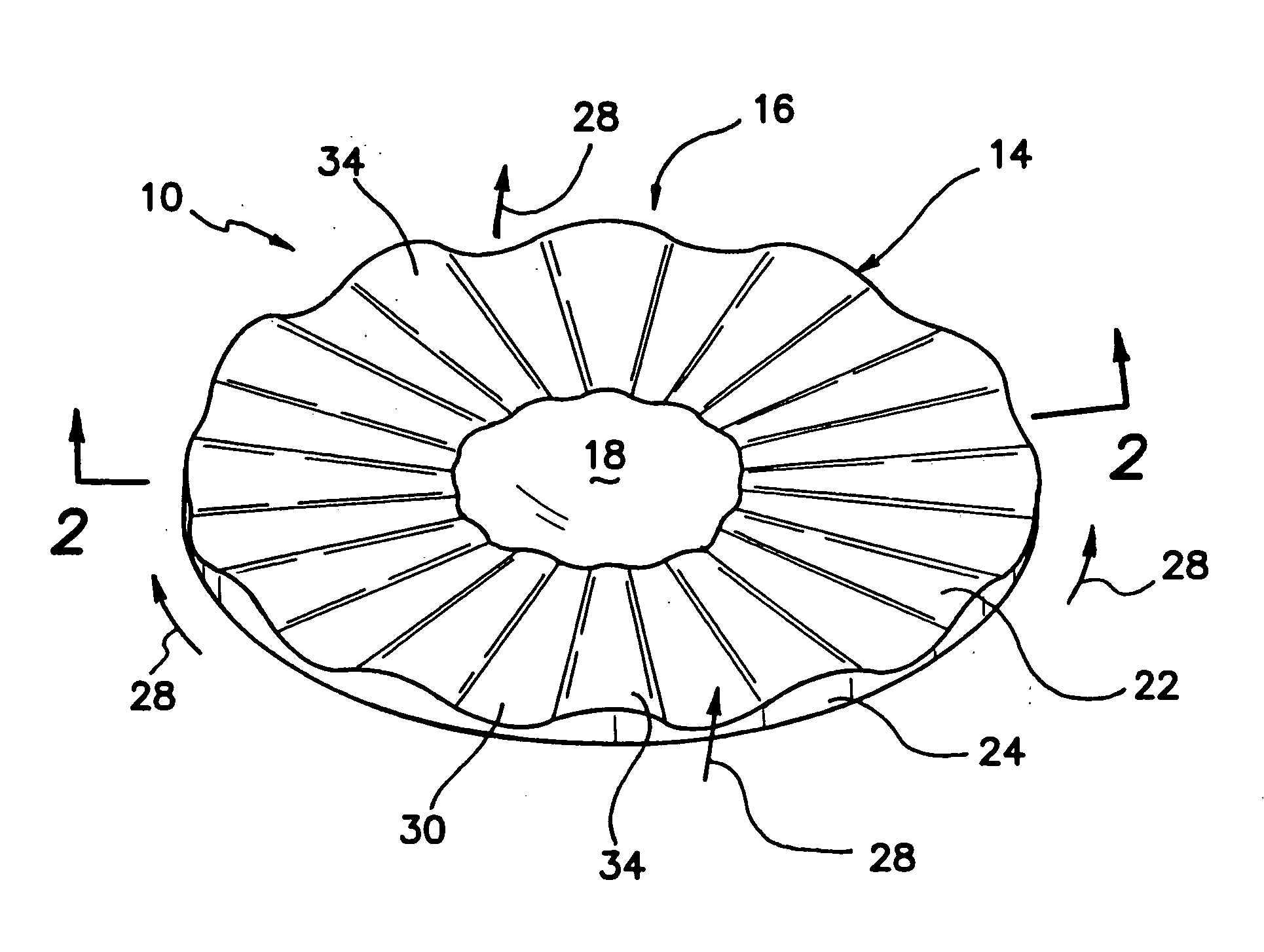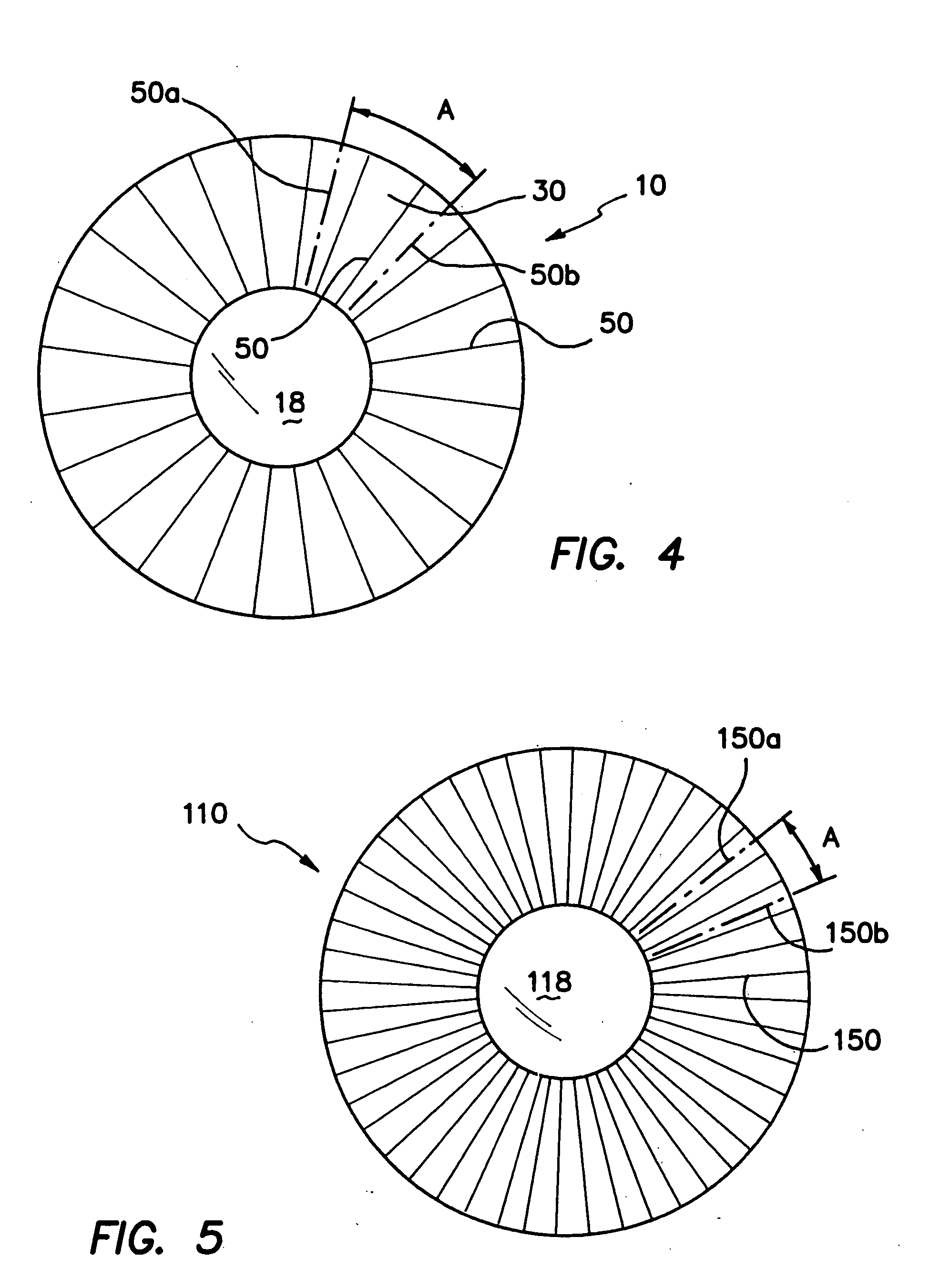Contact lenses with blended microchannels
a microchannel and contact lens technology, applied in the field of contact lenses, can solve the problems of eye damage, corneal complications, and become trapped at the lens-eye interface, and achieve the effect of reducing the concentration of debris and advantageous effect on the ocular health of the lens wearer
- Summary
- Abstract
- Description
- Claims
- Application Information
AI Technical Summary
Benefits of technology
Problems solved by technology
Method used
Image
Examples
example
[0082] Tear mixing under a soft contact lens can be estimated by measuring the time required for a tracer material (e.g., dye, microspheres, red blood cells or the like) to be removed from under the contact lens. Most tear-mixing estimates are made using a. fluorometer, which can measure the change in fluorescence under a contact lens over a specified wearing period. Typically, either high-molecular-weight sodium fluorescein (Fluorosoft®, MW=600 Da) or a dye formulated as a fluorescein / dextran combination (FITC-dextran, Smith Chemical; MW=1-12 kDa) is used in the fluorometric measurement. Fluorosoft® is absorbed by lenses with water contents greater than about 50%. Therefore, preferably FITC-dextran (MW=9-12 kDa) is used to avoid underestimates of tear mixing that might occur with lens or ocular absorption of the tracer dye.
[0083] Two fluorometric methods are currently used to estimate tear mixing. One technique uses a modified slit lamp with light focused on the POLTF as changes i...
PUM
 Login to View More
Login to View More Abstract
Description
Claims
Application Information
 Login to View More
Login to View More - R&D
- Intellectual Property
- Life Sciences
- Materials
- Tech Scout
- Unparalleled Data Quality
- Higher Quality Content
- 60% Fewer Hallucinations
Browse by: Latest US Patents, China's latest patents, Technical Efficacy Thesaurus, Application Domain, Technology Topic, Popular Technical Reports.
© 2025 PatSnap. All rights reserved.Legal|Privacy policy|Modern Slavery Act Transparency Statement|Sitemap|About US| Contact US: help@patsnap.com



